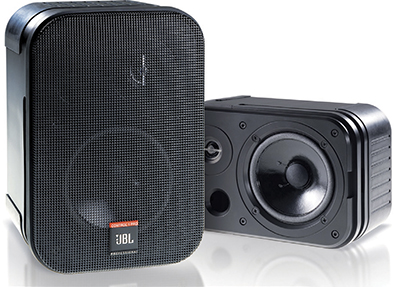The Basics of Loudspeaker Design
For any kind of loudspeaker system to be practical, the drivers need to be mounted in some kind of enclosure. But not just any old box will do, at least in a well-designed system.
The enclosure is an integral part of the proper acoustical functioning and overall performance of the entire system. A poorly designed or constructed enclosure can degrade even the best engineered and manufactured driver. One of the functions of an enclosure is to control and enhance low frequency response.
As noted in my last column, a loudspeaker driver moves back and forth in response to an input audio signal, producing sound waves from both its front and rear. The sound emanating from the rear is out of polarity (180 degrees out of phase) with that coming from the front.
If the driver was just hanging in free space, unenclosed, the sound from the front and rear would mix at the listener’s position. Since they are out of polarity with each other, they would add or null at different frequencies forming irregularities called comb filtering in the frequency response. (The term comb filtering presumably came about because of the shape of the peaks and dips as plotted on a frequency response chart, level vs. frequency.)
With an enclosure, the rear sound energy could be made to do something constructive. While there are a different ways to design an enclosure, we’ll give a general overall of two common types found in control room monitoring.
SEALED BOX DESIGN
The first is a sealed box design, sometimes called acoustic suspension. As might be expected from the name, the box is sealed top, bottom, and sides, with the drivers mounted on the front. (Actually a tiny bit of leakage is necessary and allowed to normalize air pressure.)

JBL Professional’s compact Control 1 Pro loudspeakers feature a professional crossover network coupled with professional drivers, housed in a rugged molded enclosure. Since the box is sealed, the sound coming from the rear of the drivers can’t escape into the outside world causing the dreadful comb filtering. Often this type of construction includes sound absorbing material inside the box, which tends to be more effective at mid to higher frequencies. Air pressure inside the box changes as the driver moves in and out. This is more pronounced at lower frequencies due to the longer wavelengths. That cushion of inside air, described as a “spring” in the literature, helps support the driver, effectively stiffening its suspension and altering its resonant frequency.
A sealed box is not that efficient compared to other designs, since a lot of the energy the drivers produce is contained or absorbed inside the box. Frequency response may not be able to go as low as some other box designs. On the plus side, this type of design can come in compact sizes, as its other common moniker, bookshelf speaker, can attest, and can provide good transient response even at lower frequencies.
VENTED BOX
Another and more common type of box is the ported enclosure, also called “vented box” or “bass reflex.” This type has a deliberate pathway and opening for the rear sound energy to leave the box in a controlled and beneficial way, with the port operating within a defined low frequency (LF) band. You can feel the air moving out of the port when the loudspeaker system is operating.
The pathway inside the box and the port are designed and built in such a way that the energy emanating from the port is in polarity with the front sound wave from the LF driver. The port is tuned to a specific range of low frequencies where this occurs.
Within this LF range, since the two wave fronts are in polarity, they reinforce each other, increasing the bass output. This has the benefit of increasing efficiency, compared to the sealed box design, since more acoustic watts are produced per electrical watt input. The driver doesn’t need to be driven (so to speak) as hard to produce a reasonable LF output. This allows it to operate in its more linear range, keeping distortion down.
This design may not be as tight as the sealed box for low-frequency transient response. While the ported output arrives in polarity with the direct output from the LF driver, it has to travel a little longer distance to get there. So it would be expected that there would be some sound spreading in the time domain. This lingering persistence of sound, often referred to as time smear, tends to be well-controlled in well-designed systems.
It’s important to remember to keep the port free and clear of obstructions when installing the loudspeakers. Or in other words, don’t block the port, or the intended performance will be degraded.
The loudspeaker enclosure has to accommodate more than just the drivers. There’s the connector panel, internal wiring, and depending on the design, passive cross over networks, and in the case of “powered” loudspeakers, power amps.
While the descriptions of these two enclosure types have been simplified, the actual design of the boxes is anything but, a topic for another time.
Mary C. Gruszka is a systems design engineer, project manager, consultant and writer based in the New York metro area. She can be reached via TV Technology.
Get the TV Tech Newsletter
The professional video industry's #1 source for news, trends and product and tech information. Sign up below.
